Media | Articles
5 classics that appeal across generations

As enthusiasts are often a cliquey, tribal bunch, certain cars seem to only get attention from one type of collector. This collector “type” could follow any signifier we can use to categorize enthusiast demographics, a tag ranging from income, nationality, region, gender, and age. That last one is a bit of a data doozy; defining generational trends is one of the easiest ways to organize enthusiasts groups and predict future collectibility—or lack thereof.
For example, many semi-obscure JDM imports like the 1993–96 Toyota Chaser are almost entirely ignored by older generations, while collectors under the age of 40 account for 88 percent of insurance quotes for the Japanese sedan. On the other end of the spectrum, collectors from the baby-boomer-and-older generations make up nearly 90 percent of quotes for the 1967–1990 Avanti. With collectors over 60 years of age, nostalgia drives much of the market; the sexagenarian collector also accounts for over 80 percent of quotes for the 2002–2005 Ford Thunderbird and 2003–2006 Chevrolet SSR.
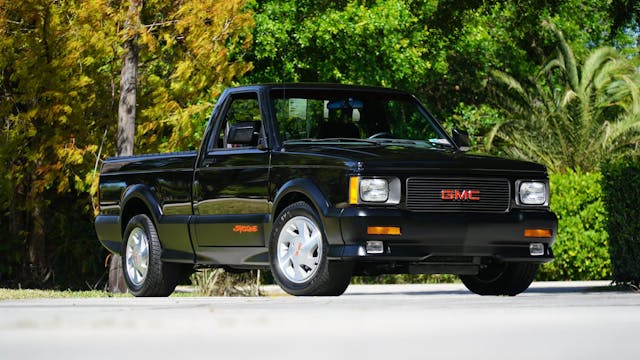
Meanwhile, Gen-Xers continues to defect from the standards of their parents. Too young for retro-inspired boulevard cruisers and too old for obscure Japanese imports, Gen-X has fixated on vintage SUVs, requesting 63 percent of quotes for the iconic Land Rover Defender and providing the majority of interest in the wild GMC Syclone and Typhoon.
What about vehicles that are equally beloved by everyone? We’re talking about cars that, if three examples rolled up at a car show, would be just as likely to be owned by any one of the three generations. Surprisingly, these demographic unicorns do exist. By sifting through three generational buckets—boomers and older, Gen-X, and millennials and younger—we’ll use the difference between the largest and smallest quote shares to determine generational spread.
The closer the quote share of each generational bucket is to a perfect third (or 33 percent), the smaller the generational spread and the more universally beloved the car. For example, the 1964–1967 Pontiac GTO has a generational spread of 53, because the difference between the largest quote group (comprised of boomers and older, at 61 percent) and the smallest group (millennials and younger, at 8) is 53 percentage points.
Marketplace
Buy and sell classics with confidence
In total, there are 55 vehicles for which the generational spread is 10 points or lower. A full list is at the bottom of this article, but we picked some of the most interesting vehicles that receive near-equal ownership interests from our three age buckets.
1968–76 Mercedes-Benz W114, W115
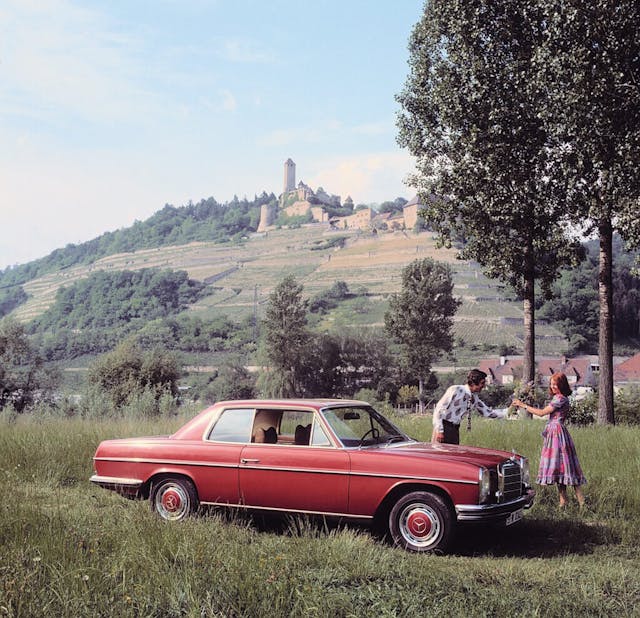
Number one with a bullet.
With a generational spread of zero and a perfect one-third quote share to each of our three age groups, the Mercedes W114 and W115 has something for everyone, likely due to its variety of engine options paired with stylish coupes and sedans. The only real generational skew is that diesel-powered 220D and 240D sedans are preferred by millennial and younger collectors who submit over 45-percent of quotes. Older collectors are drawn toward coupes, while gas-powered sedans have an almost perfect generational share.
The W114/115's successor is also surprisingly neutral. Mercedes' W123 presents a generational spread of only 8 points, with boomers, Gen-X, and millennials submitting 38, 32, and 30 percent of quotes, respectively. Mercedes isn't the only multi-generational German sedan; BMWs in general are beloved by all ages, with the 2000–2006 BMW 3-Series (E46) and 1996–2003 BMW 5 Series (E39) both offering a generational spread of 3, placing them in the top ten of lowest deviations. However, the sporty M3 and M5 skew younger with millennials providing 47 and 42 percent of insurance quotes.
On the other hand, German sports cars fall on a wide generational spread. Porsche's massive catalog of classic cars make them a favorite at car shows, but few are affordable enough to get equal ownership, leading to the semi-affordable 944 and 924 as the only Porsches with generational spreads below 10. Interestingly, the 2013–2016 Porsche Cayman has a generational spread of only 11, with millennials accounting for 27 percent of quotes, contrasting the 2013–2016 Boxster's large generational spread at 54 percentage points with collectors over 60 submitting the majority of quotes.
1986–95 Suzuki Samurai
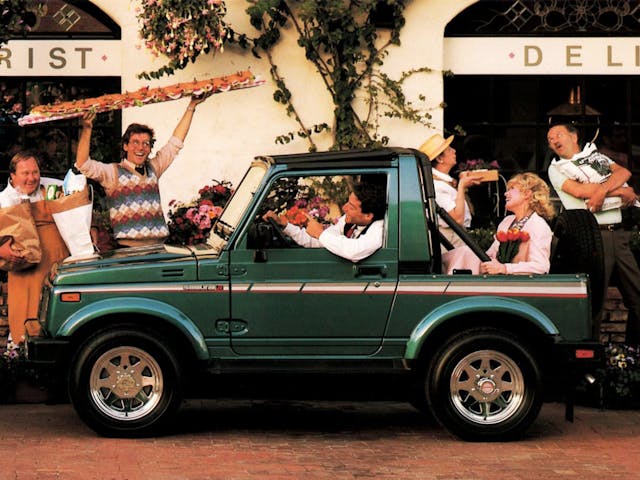
They just don't make cars like they used to, and in the case of the tiny-'n'-tinny Suzuki Samurai, that might a good thing. As an honoree of the 2022 Hagerty Bull Market List, our magazine team became acquainted with a convertible Samurai and left with these notes: "Fast only if driven over a cliff; at the end of every rocky trail is a chiropractor's office." That last part makes it surprising that 33 percent of quotes come from collectors 60 and over. Perhaps its ruggedly adorable design and its ability to punch above its size appeals to collectors of all ages, contributing to only a 7 point generational spread.
The adorable Samurai far from the only Japanese truck on this list. The first two generations of Toyota Tacoma as well as the 3rd generation 4Runner have generational spreads of 5 or less, with Gen-X submitting slightly more quotes than the rest. The 1980-1986 Datsun/Nissan 720 is the only Japanese truck in our top group with more quotes from millennials, but still presents a generational spread of only 4.
1991–96 Subaru SVX
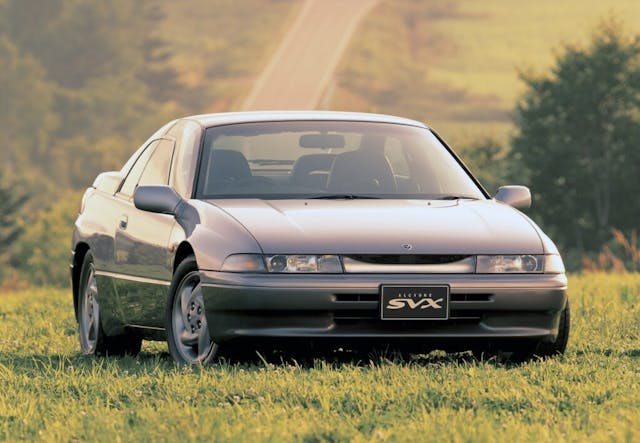
From any perspective, the Subaru SVX was an odd creation from Japan's infamous Bubble Economy era. Instead of competing with hard-edged sports cars like the Toyota Supra, Nissan 300ZX, or Mazda RX-7, Subaru built a comfortable GT as their top car of the 90s. At the time, the SVX's 230-hp, 3.3-liter flat-six was the largest engine Subaru ever produced, and was rumored to be too powerful for any of its existing manual transmissions. Of course, only offering an automatic hurt the SVX's future collectability, but the $10,000 average value is hard to ignore when compared to the far pricier contemporaries. Transmission aside, the unique styling and large glass canopy with supercar-like half-windows created a cult following; it's comfortable enough for older collectors, and obscure enough for younger ones.
Japanese cars are mainstays of cross-generational appeal, despite generally skewing younger. The Toyota Celica and Supra from the 1980s have near-equal interest from all generations, as does the Nissan 370Z. The iconic 1991–1996 Acura NSX just barely makes the list with a 10 point generational spread, favoring Gen-X. Strangely, the 1991–1996 Dodge Stealth has a generational spread of 7 while the mechanically identical Mitsubishi 3000 GT skews much younger with a generational spread of 24.
1996–2002 Dodge Viper

There are few cars more iconic than the second-generation Dodge Viper, especially in blue with white stripes in GTS form. Originally sold during the boomer's prime buying years, the Viper became a poster car for Gen-X and millennials who grew up with it heavily featured in video games and movies.
Aside from the somewhat controversial 2003–2006 Viper—receiving a majority of quotes from collectors over 60—all generations of Viper have a fairly low generational spread with Gen-X showing slightly more interest. With a generational spread of only 4, the second-gen Viper is the one with the most universal appeal. On the other side of the sports car spectrum, the Alfa Romeo 4C and Lotus Elise surprisingly make the list with generational spreads of 5 and 7 points, respectively, despite missing the qualities that our generations appreciate—boomer comfort, Gen-X practicality, and millennial affordability.
2003–04 Mercury Marauder
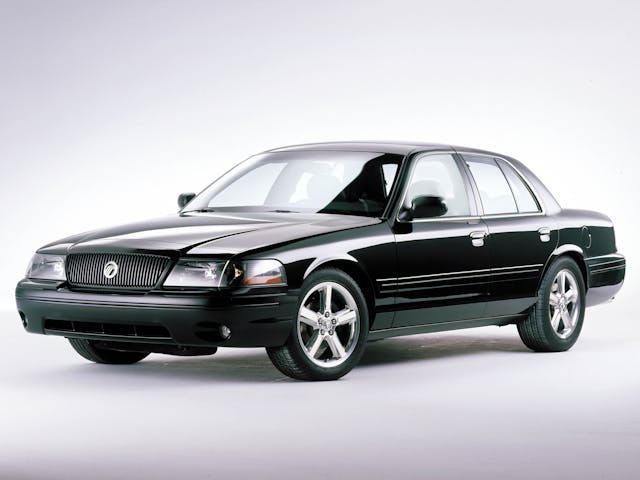
The Marauder is in a class of its own. It's the only post-millennium American sedan to appear on our list, and with good reason. Following the "ride softly and carry a big stick" attitude set by the Buick Grand National and Chevrolet Impala SS, the later Marauder packed a 302-horsepower 4.6-liter V-8 enrobed by understated-yet-aggressive styling. Just over 11,000 Marauders were sold during two years of production, which is about 95 percent less than total Grand Marquis sales over the same period. Surprisingly, the average age of its buyer was 18 years younger (51 vs. 69) than the bog-standard Grand Marquis.
Less surprising is how American muscle sedans play well with the younger generations. The 1994–1996 Chevrolet Impala SS and Buick Grand National receive the majority of its quotes from Gen-X and millennials, which account for generational spreads of 23 and 29, respectively. With a generational spread of only 4 points, the Marauder appeals to collectors of all ages, which bodes well for future collectability.







What about 1998-2003 Dakota RT 5.9 liter
I wonder what the percentage difference for the Corvette is. At shows and cars & coffees, I’m seeing more and more younger folks choosing America’s sports car as their ride, especially the C8.